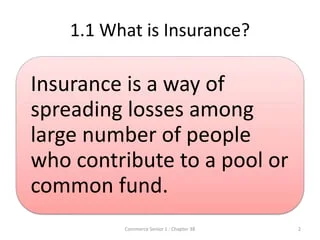The Pacific Prime PDFs
The Pacific Prime PDFs
Blog Article
Some Ideas on Pacific Prime You Should Know
Table of ContentsPacific Prime for DummiesThe smart Trick of Pacific Prime That Nobody is DiscussingRumored Buzz on Pacific PrimePacific Prime Fundamentals ExplainedThe Ultimate Guide To Pacific Prime

This is due to the fact that the data were accumulated for a period of solid economic performance. Of the approximated 42 million people who were without insurance, just about concerning 420,000 (about 1 percent) were under 65 years of age, the age at which most Americans come to be eligible for Medicare; 32 million were adults in between ages 18 and 65, about 19 percent of all adults in this age team; and 10 million were children under 18 years of age, concerning 13.9 percent of all children (Mills, 2000).
These quotes of the number of individuals uninsured are generated from the yearly March Supplement to the Existing Population Study (CPS), conducted by the Census Bureau. Unless otherwise kept in mind, national price quotes of individuals without health insurance and proportions of the populace with various type of insurance coverage are based on the CPS, the most commonly made use of source of price quotes of insurance policy protection and uninsurance rates.
Getting The Pacific Prime To Work

Still, the CPS is particularly valuable because it creates annual estimates reasonably promptly, reporting the previous year's insurance protection approximates each September, and since it is the basis for a constant set of estimates for greater than two decades, permitting for evaluation of fads in coverage in time. For these reasons, along with the comprehensive use the CPS in various other research studies of insurance coverage that are presented in this record, we depend on CPS estimates, with constraints noted.

The price quote of the number of without insurance individuals broadens when a populace's insurance policy condition is tracked for several years. Over a three-year duration beginning early in 1993, 72 million individuals, 29 percent of the united state population, were without insurance coverage for a minimum of one month. Within a single year (1994 ), 53 million individuals experienced at the very least a month without insurance coverage (Bennefield, 1998a)
6 out of every ten without insurance grownups are themselves utilized. Although working does boost the chance that a person and one's member of the family will certainly have insurance coverage, it is not a More hints guarantee. Even participants of families with two full time wage earners have virtually a one-in-ten possibility of being without insurance (9.1 percent uninsured rate) (Hoffman and Pohl, 2000).
The 3-Minute Rule for Pacific Prime
New immigrants represent a considerable proportion of individuals without health insurance policy. One analysis has associated a considerable section of the recent growth in the size of the united state without insurance population to immigrants who showed up in the nation in between 1994 and 1998 (Camarota and Edwards, 2000). Recent immigrants (those who pertained to the USA within the previous 4 years) do have a high rate of being without insurance (46 percent), however they and their children make up simply 6 percent of those without insurance policy country wide (Holahan et al., 2001).
The partnership between medical insurance and access to care is well established, as documented later in this chapter. The connection between health insurance coverage and health and wellness results is neither direct nor easy, a considerable clinical and wellness solutions research literature links wellness insurance policy coverage to improved accessibility to care, much better high quality, and improved individual and population health standing.
Degrees of analysis for analyzing the effects of uninsurance. This conversation of health insurance policy coverage concentrates mostly on the U.S. populace under age 65 due to the fact that essentially all Americans 65 and older have Medicare or other public coverage. In addition, it focuses especially on those with no health insurance policy for any kind of size of time.
Little Known Questions About Pacific Prime.
The issues dealt with by the underinsured are in some aspects similar to those faced by the uninsured, although they are usually less extreme. Health insurance policy, however, is neither needed nor adequate to gain accessibility to medical services. The independent and straight impact of health and wellness insurance coverage on access to health and wellness solutions is well established.
Others will acquire the health care they need even without medical insurance, by spending for it expense or seeking it from companies that provide care totally free or at extremely subsidized rates. For still others, health and wellness insurance coverage alone does not make sure invoice of care due to various other nonfinancial barriers, such as a lack of wellness care service providers in their area, limited accessibility to transportation, illiteracy, or etymological and cultural distinctions.
The smart Trick of Pacific Prime That Nobody is Talking About
Official research concerning without insurance populaces in the United States dates to the late 1920s and very early 1930s when the Committee on the Expense of Healthcare produced a collection of records concerning financing doctor office check outs and hospitalizations. This problem ended up being significant as the numbers of clinically indigent climbed up during the Great Clinical depression.
Report this page